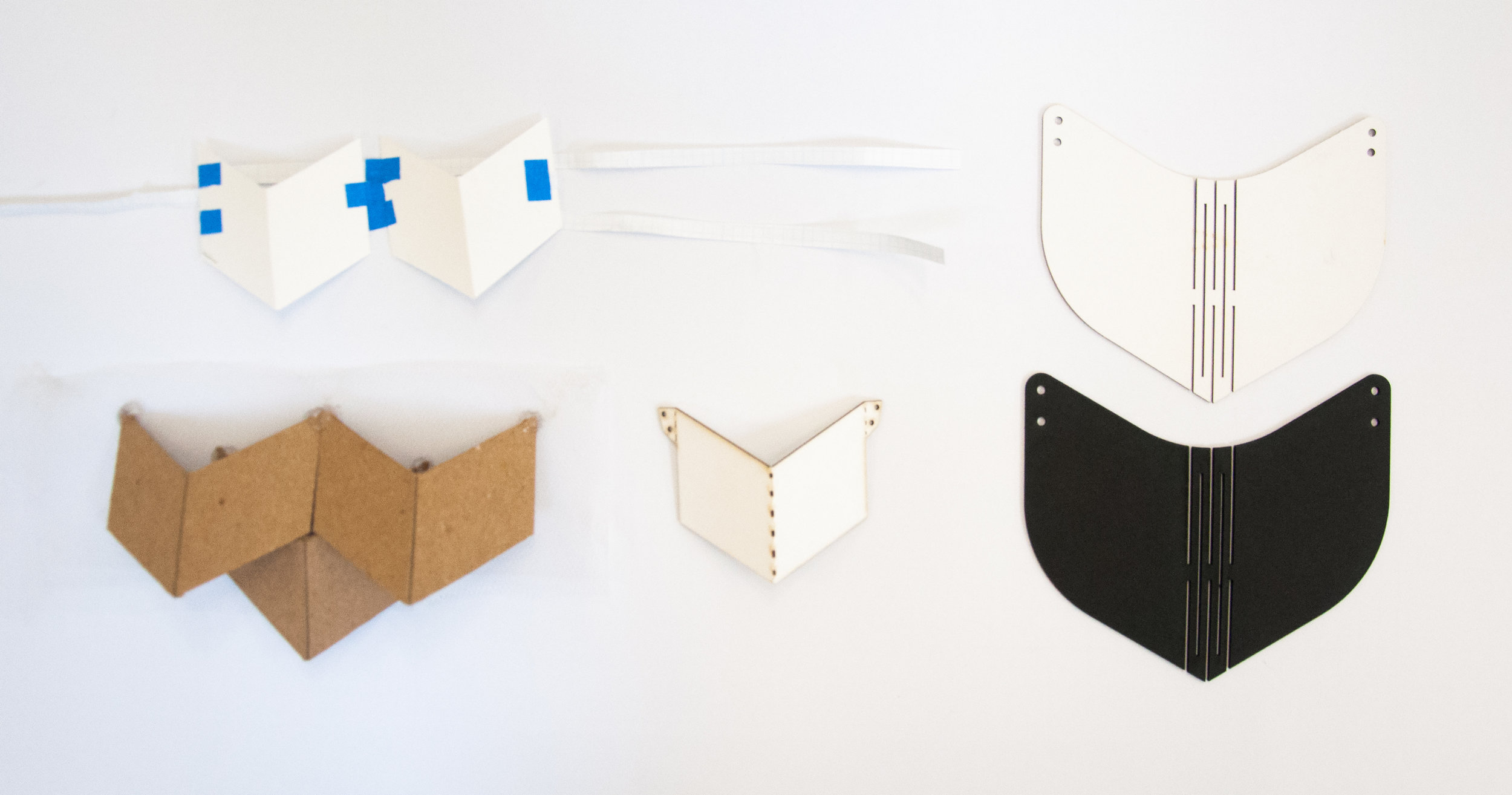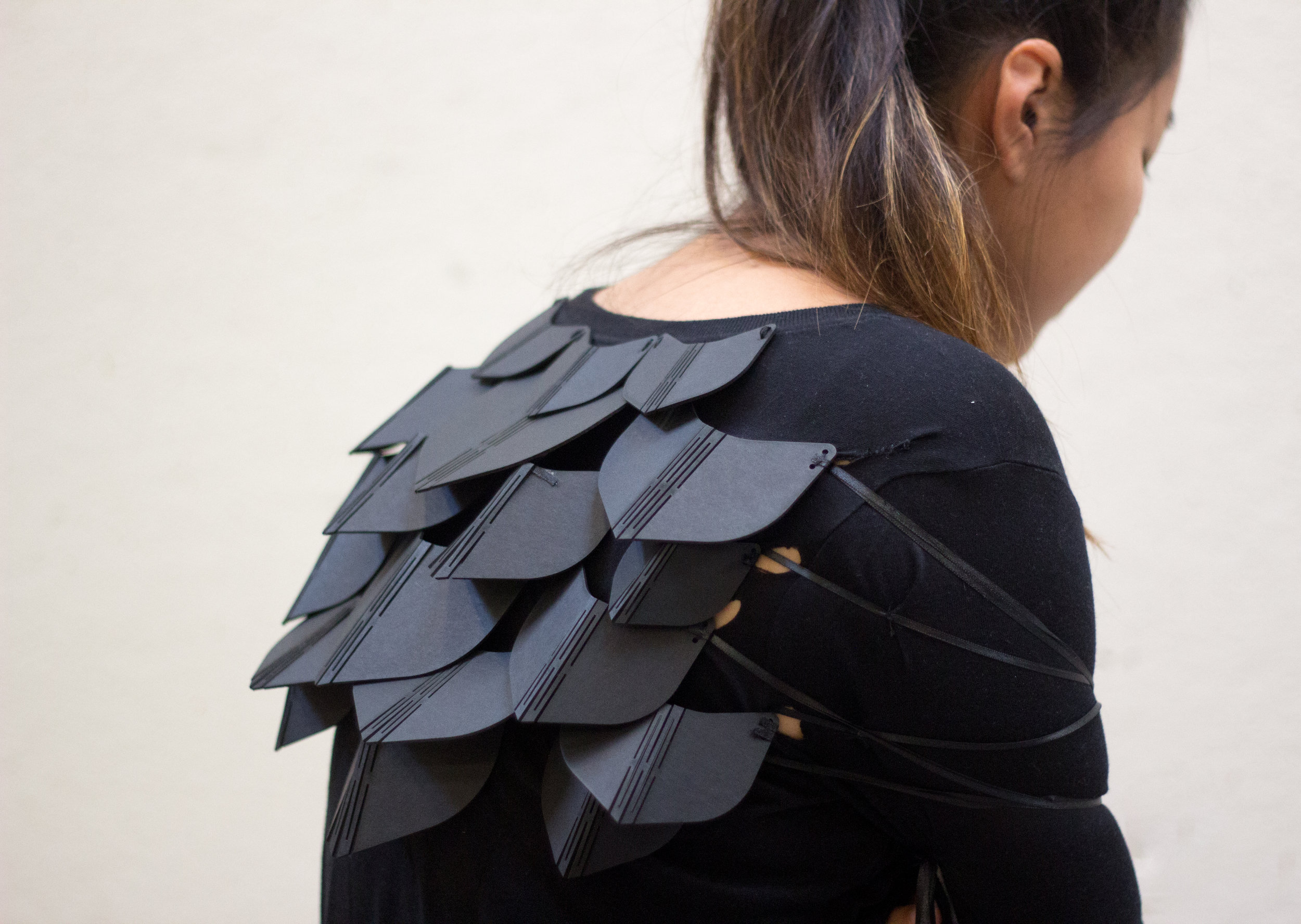How might we create a “second skin”?
The Pangolin Shirt is an exploration in augmenting one of our skin's primary functions: defense. The idea was to create a garment that not only passively defends, but also changes the level of defense in response to one's body language. As shown in the GIF above, when the wearer move into a defensive pose (ex: crossing her arms) the scales on the back of the shirt flare out and become an active defense mechanism.
The progression of prototypes is shown from top left to bottom right. I started with a paper prototype to test some key assumptions about the string mechanism for pulling the scales together, then moved on to test the different bending properties of chipboard and mat board.
The small white matboard prototype in the middle is an example of a failed prototype. I laser-cut a perforated line for the center crease, but the scale did not bend back and forth. It yielded and ripped along the perforation, and shortly after I decided to pivot my design plans and try prototyping with living hinges.
In order to make the scales flare out more, each scale is designed to bend along the center and axis of symmetry. Due the the matboard's tendency to rip and crumble when folded, the best solution was to laser cut a living hinge to achieve highly localized and controlled flexibility in each scale.
Final scale design utilizes a living hinge cut to achieve required flexibility.
FLAT ARRANGEMENT
The scales of various sizes were arranged in overlapping rows, emulating how scales often appear in nature. The overlapping and offset row configuration also guarantees that the lower rows will not nest under the top row, but will actually help push the upper rows out when the scales start to bend and flare out.
ACTIVE ARRANGEMENT
Here is it clear that the offset in the layers helps the scales push the next layer up, instead of nesting the layers within each other.
This drawing shows the underlying mechanism that causes the scales to fold and flare.
In the drawing, the colored lines represent ribbons and the X marks represent where the ribbons are sewn onto the scales. When the pink ribbons are pulled to the left and the blue ribbons are pulled to the right, the way they are attached to the scales causes the two sides of the scales to pull together, resulting in the scale bending up along the living hinge.
On the shirt, the ribbons are attached to the upper arms of the sleeves. The pulling of the ribbons is entirely controlled by how far the wearer displaces their upper arm from a relaxed posture. Usually a defensive pose requires that the upper arms be brought closer in toward the center of the body.
This shirt is designed to fit like any ordinary long-sleeved shirt, and the scales lie very flat along the upper back when the wearer is in a relaxed, upright posture.
This image more clearly shows the variability in how much the scales move against each other. In a next iteration of this design, I would also vary the movement of the scales across the entire shirt surface so that some regions flare out, some regions flatten, and the wearer has more precise control over which areas engage the defense mechanisms.
Designed and built by Annie Zhang
This curve represents the skills I practiced and strengthened through my work on this project.











